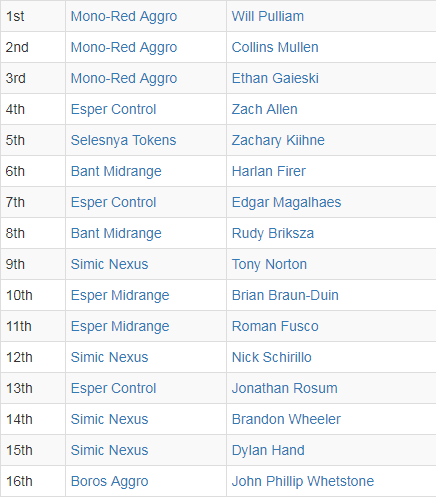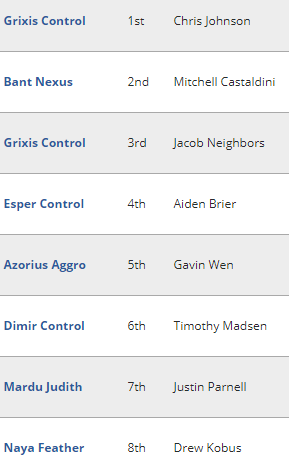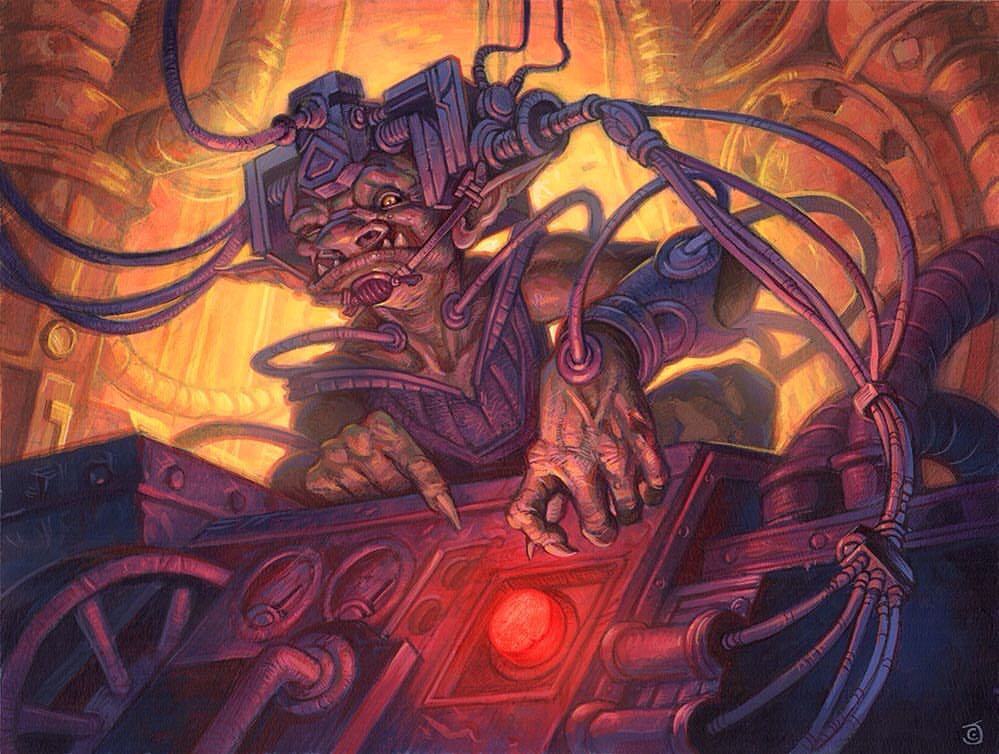Are you a Quiet Speculation member?
If not, now is a perfect time to join up! Our powerful tools, breaking-news analysis, and exclusive Discord channel will make sure you stay up to date and ahead of the curve.
SCG Richmond marks the first high-level event since War of the Spark's release, and we're already seeing a huge impact on Standard. Typically after set releases, a coinciding SCG Open will light a fire under players to try out new cards and acts as the first data point competitive players can draw conclusions from.
For many players, aggro decks seem to be the play for these early-in-the-format events. Adjusting midrange and control decks is often very difficult for an unknown field, and playing an efficient suite of threats is likely better than trying to pack your deck full of answers. This Standard Open was no different.

Mono-Red Is Still Really Good
Mono-Red was definitely the deck to beat for this tournament, as many people expected. It was probably the best deck in the format before WAR's release and will be the front-runner for many players this MCQ season. It's fast, efficient, and has a solid game against nearly every other deck.

Not too much has changed for the list, with most of the 75 still intact from the last iteration of Standard. Standouts here from WAR are the additions of two key red planeswalkers: Chandra, Fire Artisan and Tibalt, Rakish Instigator.
While many other Mono-Red players opted for Experimental Frenzy in her stead, Chandra presented a difficult-to-answer card advantage engine that doesn't punish you for having cards in hand when it resolves, at the cost of the explosive (but inconsistent) plays Frenzy can provide off the top of the deck. Additionally, for decks that aren't packing clean answers like Vraska's Contempt or Assassin's Trophy, attacking into her and taking anywhere from 5 to 7 damage is often backbreaking.
For decks that have incidental life gain on their spells, like Esper Control has in Absorb, Vraska's Contempt, or Moment of Craving, Tibalt removes those clauses and even applies pressure on the board.
Speaking of Esper decks, control and midrange variants had a half-decent showing at the event as well. As I said before, they were likely not tuned to deal with the aggressive metagame, but another problem exists for Control strategies.
Esper and Bant Midrange decks came to party over the weekend, presenting Teferi, Time Raveler as a huge problem for reactive strategies. Without an on-time Thought Erasure or Duress, a resolved Time Raveler is a huge problem. From Esper Midrange, issues like draw step plus discard spell, nullifying countermagic, and what at times feels like specifically good removal spells make it difficult to beat. Bant Midrange benefits from it by essentially making all of their creatures uncounterable. In tandem with Vivien, Champion of the Wilds, every threat can be deployed without fear of interaction.
Vivien, Champion of the Wilds strikes me as an important planeswalker going forward. She's seeing play in Bant, Gruul, and Sultai builds as a consistent way to put threats into play, with a relevant tick-up as well. It offers card advantage at a lower CMC compared to the original Vivien Reid, but there may be a bit of space in decks to run both. Adding flash to cards like Deputy of Detention is also just horrifying.
Finally, we have to talk about Nexus of Fate. Some call it a design mistake, and others will call it a necessary evil of the format. Despite your opinion, there are still many players looking to play Simic Nexus. While it didn't quite crack the top eight at this event, you'll find four copies of the deck made top 16, and are likely just in need of some slight adjustments to not get pushed out of the early game by aggressive strategies. Root Snare doesn't quite get the job done against a grip full of Lightning Strikes and Shocks. That being said, it won't take much for these decks to start adapting to the meta.
Should this deck see more success in the future, cards like Unmoored Ego and Thief of Sanity will become more important, and I'll be looking to these with great interest going into this weekend and beyond.
The SCG Richmond Standard Classic
While many of these archetypes were knocked out of the main event, looking at Classic decklists is still worthwhile.

This top eight tells a different story for the format altogether. Mono-Red is noticeably absent (even from the top 16 decks) and we see some more decks that may be off the beaten path. Note that this tournament takes place the Sunday after the main event, giving players an opportunity to adjust their lists. More importantly, it gave them a chance to deal with the Mono-Red menace. Notable decks found here are Grixis Control, Azorius Aggro, Mardu Judith, and Naya Feather.
While Esper seemed like the premier control choice for the Open, the Classic saw Grixis Control take the top slot. The new Nicol Bolas, Dragon-God is an absolute house and can win games on its own. Getting to resolve it and having it stick is the tricky part. This list was able to take down the Classic, sporting a full playset of the powerful planeswalker, as well as its Core 19 iteration, Nicol Bolas, the Ravager.
Azorius Aggro, which is really just the tried and true White Weenie from the last standard with a light splash for Deputy of Detention and some countermagic, looks like a nice place to be. Gideon Blackblade finds a home here, offering relevant keywords and possible spot removal for difficult permanents when games go long.
Mardu Judith plays like an aristocrats deck, sacrificing and recurring cards like Gutterbones and Dreadhorde Butcher for value. Sorin, Vengeful Bloodlord makes it all come together with its reanimate ability, and will be an interesting card to watch should this archetype find its footing going forward.
As if there wasn't enough hype around Feather already, here's a solid decklist to really prop up her price going forward. If this card is not removed on sight, it can be absolutely devastating. Additionally, its base stats as a 3/4 with flying put a damper on a lot of threats around that spot on the curve. Another powerhouse that saw a bit of hype during spoiler season is Dreadhorde Arcanist. It slots perfectly into this deck with its spell recursion ability and blocks most one- and two-drops profitably.
These decks likely will show up at MCQs in some number, so getting familiar with them might be to your benefit.
Mythic Championship Qualifiers
With the new MCQ system firmly in place, players of all skill levels will be looking to take home the top spots at stores the world over, and that will drive a lot more demand on Standard cards in the next few weeks. Given SCG Richmond's preliminary results, I expect the majority of the field to be on Mono-Red or some Esper variant. If you're not taking either of these decks into consideration when deciding on your registered 75, you may be in for a rough Saturday.
As we are still very early into this format, there's still a bit of room to brew and explore new cards and revisit some old favorites. Here are the cards I expect to be snapped up by players looking to take down these events.
Potential movers
Risk Factor was in many Mono-Red lists over the weekend, but not all lists were adapting full playsets. This will likely see play as a full playset in every burn 75. Outside of Experimental Frenzy, it is one of the most difficult cards to deal with for Control and Midrange decks.
As I said before, this card is incredibly tough to deal with and is often backed up with countermagic. I think we'll be seeing a lot more of this card going forward from several decks. Esper Midrange utilizes it best in my opinion, but don't sleep on Bant Midrange either.
Many Esper Control decks opted to Liliana, Dreadhorde General as big planeswalker to close out the game, but Ugin was also pretty popular as well. A resolved Liliana will probably result in a bunch of zombie tokens on your end, with the occasional bit of card draw, but Ugin the Ineffable may serve this role a bit better.
Many pro players are heralding this as the new hotness in eternal formats, and for good reason. It shuts off any cantrips from your opponent and digs for answers at the same time. For control matchups, resolving one of these first is extremely important. Like Leovold, Emissary of Trest and Notion Thief before it, this new Narset will demand an answer, and the metagame will have to adjust to deal with it. Many insiders are very interested in this card (myself included) and are looking to get in sooner rather than later.
Bear in mind, this is an uncommon printed in one of the most popular sets, if not the most popular set of all time. If we can expect a similar trajectory to Fatal Push, expect this card to be on the rise and approaching $5 price point soon enough.
Growth-Chamber Guardian is an incredibly efficient creature. It provides card advantage and consistent pressure on your opponent, something that many green midrange decks will need to compete in the metagame. The price of this card will likely be attached to the success of decks playing Incubation Druid and Vivien, Champion of the Wilds.
Bring It On Home
The metagame will take a while to settle out, and I expect things to diversify a bit more than they currently are with the new influx of War of the Spark cards. There are still a lot of brews to explore in the coming weeks, and it will likely take a while to solve this format with such a deep card pool.
That does it for this week! You can follow me on Twitter @chroberry or Instagram @chroberrymtg if you want to see extra goodies and spoilers for next week’s article. Feel free to let me know how you feel about my targets here in the comments, or if there’s anything you think I missed!
Peace!





